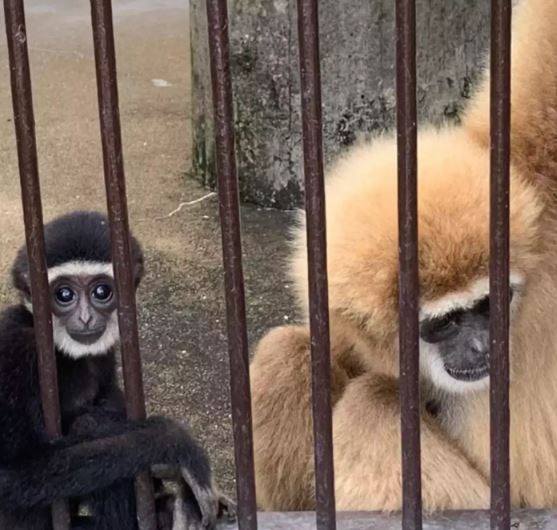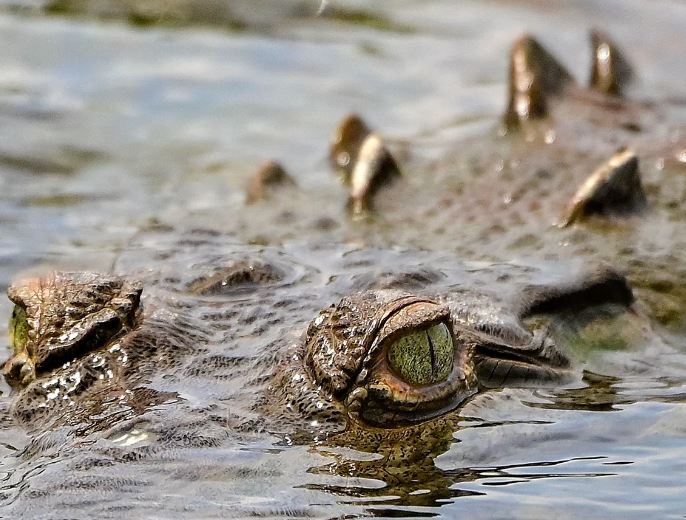A perplexing case at the Kujukushima Zoo & Botanical Garden in Nagasaki has left zookeepers astonished.
A female white-handed gibbon named Momo became pregnant despite being isolated from all male monkey.

After thorough investigation, the mystery was finally unraveled, shedding light on the surprising ways nature finds to perpetuate life.
The monkey Momo has an unlikely pregnancy
In 2021, Momo, who was housed alone in her cage, gave birth to an adorable baby monkey.
The zoo staff were baffled and referred to the incident as a ‘miracle,’ reminiscent of Dr. Ian Malcolm’s famous line from Jurassic Park, “life… err finds a way.”
To solve the mystery, the zookeepers conducted a DNA test on the baby gibbon.
The results revealed that the father was Itoh, a male gibbon kept in a separate enclosure.

This discovery raised more questions than answers, as the two gibbons were never seen together.
The investigation aimed to uncover how Momo gave birth while alone in her cage
According to Yamano, a staff member, the investigation revealed that Momo and Itoh could access an area next to Momo’s enclosure alternately.
This public display area inadvertently facilitated their interaction.
The key finding was a tiny hole, only nine millimeters in diameter, in the board separating the two enclosures.
Although the zoo did not capture footage of the copulation, it is believed that Itoh and Momo managed to mate through this small hole when Itoh was in the display area and Momo was next door.

This unprecedented event has led the zoo to revise their housing arrangements for the gibbons.
The staff plan to allow Itoh into the same enclosure as Momo and their baby to ensure they can be together.
Additionally, they have fixed the small hole in the wall to prevent any future surprises.
Watching video
Previously, a crocodile also gave birth without mating.
Scientists have recently recorded the world’s first case of a crocodile reproducing through parthenogenesis, without mating, at a zoo in Costa Rica.

According to a study published in Biology Letters on June 7, a female American crocodile had lived in isolation for 16 years at the Costa Rican zoo.
In 2018, this crocodile laid 18 eggs in her enclosure, a phenomenon not uncommon among captive reptiles.
However, something more puzzling occurred after three months of incubation. One of the eggs was found to contain a fully developed, but stillborn, crocodile hatchling.
According to Reuters, citing the study, reported that scientists examined the genetic structure of the crocodile embryo.
They found DNA sequences reflecting a process of spontaneous parthenogenesis (FP), or reproduction without the genetic contribution of a male individual.

FP, also known as “virgin birth,” has been observed in fish, birds, lizards, and snakes. However, scientists assert that this is the first known case of such a phenomenon in crocodiles.
In parthenogenesis, the egg cell of a female can develop into an embryo without fertilization by male sperm. The embryo is genetically identical to the mother, but the offspring usually tend to be weak and prone to early death.
One hypothesis is that parthenogenesis might be more common in species on the brink of extinction. This reproductive strategy could help these species adapt to harsh environmental conditions.
It might also address a lack of male individuals needed to maintain population numbers.
The American crocodile is a vulnerable species with a risk of extinction.
Scientists believe that the parthenogenesis observed in the Costa Rican zoo crocodile could provide new insights.
These insights may help us understand the ancestors of reptiles.
These ancestors lived on Earth during the Triassic period, around 250 million years ago
